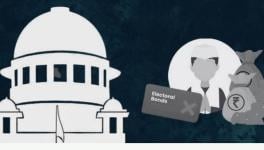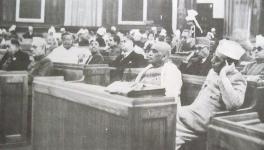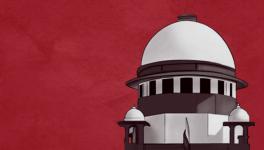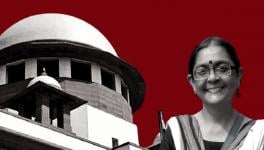Anti-Reservation Group Petitions Supreme Court to Exclude ‘Creamy Layer’ From SC/ST Reservations
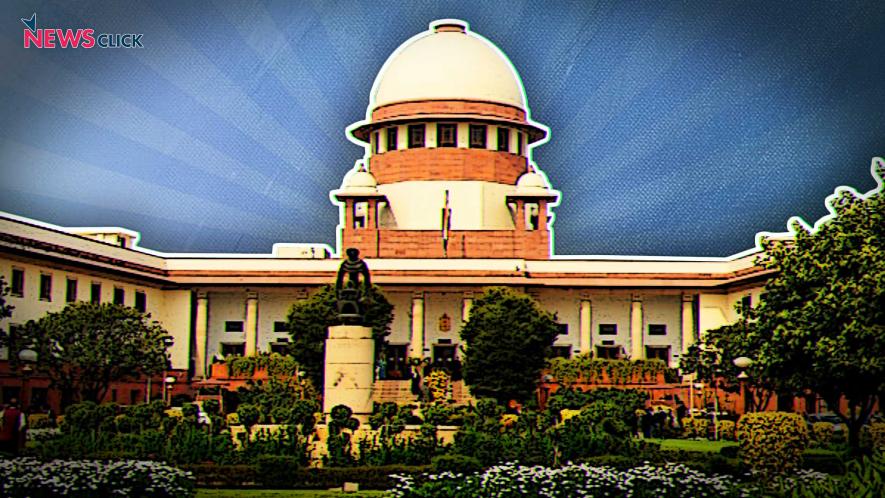
Newsclick Image by Nitesh Kumar
Acting on a petition filed by anti-reservation group Samta Andolan Samiti, the Supreme Court has asked the Centre to give its view on keeping out the ‘creamy layer’ from the quotas for the Scheduled Castes (SC) and Scheduled Tribes (ST) in government jobs and education. The PIL lists Department of Personnel and Training, Ministry of Law and Justice, Department of Social Justice and Empowerment, National Commission For Scheduled Castes, National Commission for Scheduled Tribes as “respondents”. Many analysts see the move as an attempt to sabotage the Constitutionally mandated reservation system.
A bench headed by Chief Justice of India Dipak Misra on 19 January listed the matter for hearing after two weeks and ordered that a copy of the said public interest litigation (PIL) be given to the Centre’s law officers.
The petition argues that “the uplifted/affluent and advanced sections of the Scheduled Caste and Scheduled Tribe communities snatch away the maximum benefit and the 95% members of the Scheduled Caste and Scheduled Tribe communities are in disadvantageous position and they are still without any benefit of reservation and the benefit of Government Schemes meant for backward Scheduled Caste and Scheduled Tribe communities.”
“Thus, the benefits of reservation policy are not percolating down to the people, who are in actual need of the same and the practice of including the members of the creamy layers of the said Communities has resulted in abuse by the advanced and affluent members of the said communities,” says the PIL.
To begin with, it is rather suspect that Samta Andolan Samiti—a group with the sole agenda to end caste-based reservations in the country—is worried that “the benefits of reservation policy are not percolating down to the people”.
It is the same group that had protested and filed a petition in the Supreme Court against the SC/ST quotas in job promotion.
In fact, advocate Shobhit Tiwari, who appeared for the petitioners along with another advocate, and who urged the court that it was an “important issue that called for an early decision”, has been involved with the group in the “fight” to end reservations — watch this video to hear him talk about it.
Along with Samta Andolan Samiti, there are nine individuals belonging to the SC/ST communities in Rajasthan behind the petition.
Now, the concept of the ‘creamy layer’ — the affluent sections among disadvantaged communities — is legally applicable to the reservations for the Other Backward Classes (OBCs).
However, the same concept cannot be automatically applied to the SC and ST communities. The socio-economic profile of the caste communities that make up the OBCs varies greatly, and in many areas some of the OBCs are even the dominant and elite sections.
The SC and the ST communities, however, occupy the bottom rungs of the socio-economic hierarchy in the country. They face not just economic deprivation – in terms of incomes or assets – but also deep-rooted social deprivation, not to mention outright discrimination and even atrocities. This was why a Constitutional guarantee of reservations was provided for SC and ST communities.
This economic deprivation is evidenced in the NSSO data from their report ‘Household Consumer Expenditure Across Socio-Economic Groups 2011-12’.
The report gives the proportion of people from different socio-economic groups across consumer expenditure deciles, that is, monthly spends divided into 10% parts starting from the least spend to the highest. Data was collected from SC, ST, OBC and ‘Others’ (upper castes mostly). Monthly consumption expenditure is usually taken as a proxy for income because there is no direct survey to collect incomes data in India.
The highest expenditure decile has just 3.4% people among ST, 5.9% among SC, 9.8% among OBCs and 17.2% among others. Clearly, a very small fraction of SC and ST members get into the highest (top 10%) of expenditure deciles. Conversely, ST and SC have the highest proportion in the poorest 10% - 20.8% and 13.1% respectively, compared to 8.4% among OBCs and 5% among upper castes.
Clearly, despite all reservations, very few SC and ST community members manage to break into the top 10% of population.
Similarly, the National Family and Health Survey (NFHS) – 4, lists wealth distribution among social groups by quintiles (divided into five equal parts, which means taking 20% of the said population at once. A mere 5.5% of the STs and 10.9% of the SCs are in the highest quintile (the top 20%). This is the lowest proportion of any social group in the highest wealth quintile. On the other hand, 45.9% among the STs and 26.6% among the SCs are in the lowest wealth quintile — once again, the maximum proportion of any social group in the lowest quintile.
These numbers should only be taken as indicative because the methodology of considering quintiles lumps together the 20% of the wealth in one segment hiding the wide disparity that exists within this bracket at the top. As per other studies of wealth distribution, the top 1% own a disproportionate amount of wealth. So, the 20% bracket would be drawing in a large number of persons who have much lower wealth.
So even to consider the 10.9% of SCs, for example, as being among the highest wealth group is an exaggeration, given the more or less uniform levels of deprivation that exist in the community and the disparity between the very tiny proportion of well-off people who exist in the community. So, there is no way that even this can be considered as the “creamy layer”.
The petition has asked the Supreme Court to issue directions and criteria for the exclusion of the creamy layer among SC/ST communities from the quotas. While we wait for the BJP-led NDA government to make its stance clear, we will do well to remember that the ‘creamy layer’ in the most historically deprived groups is not substantial enough to be considered at all.
Get the latest reports & analysis with people's perspective on Protests, movements & deep analytical videos, discussions of the current affairs in your Telegram app. Subscribe to NewsClick's Telegram channel & get Real-Time updates on stories, as they get published on our website.









